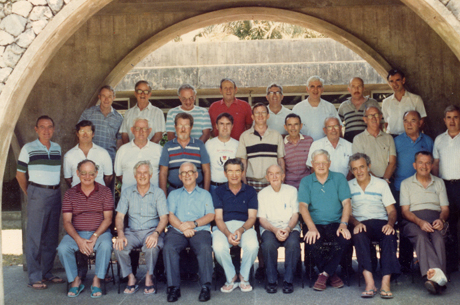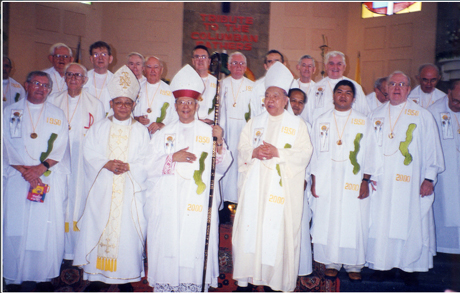Integral Evangelization By The Columbans In Negros
By Jack B. Pamine
Mission Awareness Ministry
In my Basic Christian Community-Community Organizing (BCC-CO) days, after I left the Redemptorist Formation program, we taught three models of Basic Christian Communities (BCCs): liturgical, developmental and liberational. I didn’t expect to see these being implemented by the Columbans, though maybe I didn’t recognize that they all belong to what is now called ‘integral evangelization’.

My first encounter with these models was in southern Negros Occidental, now the Diocese of Kabankalan, as a Redemptorist in Cebu, on my first summer mission experience in 1984. Three of us chose the Land of Sugarcane instead of going to a barrio. We also attended almost daily the court hearings of the Negros Nine in Kabankalan at the invitation of Redemptorists Fr Francis Connon and Fr Patrick Sugrue. I had no idea then of the Columbans’ work except that they had a room in the Redemptorist Monastery in Bacolod. My first image of a Columban was Fr Mark Kavanagh, an Irishman. Years later I was to change my affiliation from the Redemptorists to the Columbans but with the same mission of Christ
I was amazed during the trial of the Negros Nine to hear the former cook of Fr Niall O’Brien allege that Father Niall and Fr Brian Gore had plotted in the convento the killing of Mayor Sola of Kabankalan. I saw the court interpreter cry as he translated this statement. The immediate question that came into my mind was ‘Why?’ I understood later that the accused priests were championing the ‘liberational model’ for building BCCs, by supporting the rights of the poor and challenging the unjust social order that kept them in the poverty and misery that was very apparent at that time.
While the trial was going on inside a multitude were kneeling and praying in the public plaza outside led by Columban priests. I recognized the commanding presence of Fr Terence Bennett, with rosary in his hands, because he had brought me to the Columban family. From the balcony of the courtroom I had a clear view of what was going on. People whose physical appearance showed they were poor were kneeling and praying the rosary. Their placards identified the organizations they belonged to. The most recognizable were Kristianong Katilingban (BCCs) and the Legion of Mary. It was rather odd to have the two together. The scene of people kneeling I attributed to the ‘liturgical model’ of BCCs.

Working with the Columbans, I discovered the great contribution they had made in Negros and one that completed the integral approach. They had followed the ‘developmental model’ by building schools. They founded almost all the schools in the South, from the then St Joseph Academy, now Saint Joseph College of Canlaon in Negros Oriental, by ‘sports guru’ the late Fr Colum O’Halpin and the late Fr Patrick Hynes, to St Michael’s Academy in Hinobaan, nearly two hundred kilometers away. The Franciscan Apostolic Sisters who later took charge in Canlaon did not know who had founded the school till I told them.
Most of this was before Vatican II. The Columbans saw education as a way to uplift the people from poverty. Columban Fr Michael Doohan also founded a vocational school to prepare students for jobs that could earn them a living.
The Columbans were also into health services, the production of liturgical material, sports, scholarship programs not only for ordinary students but also for seminarians, and a whole variety of pastoral engagements, including support for catechists. They did what seemed unthinkable at the time. They didn’t always agree about what each other was doing. But looking at the whole picture, it was two sides of the same coin, the Mission of the Church, an Integral Evangelization in place.
For me, one of the greatest contributions of the Columbans, and that we need to continue to nurture in this land of extreme poverty and wealth, is active non-violence, epitomized by the struggle of the Negros Nine.
The evangelization by the Columbans of southern Negros Occidental was really great. Maybe before the last living witnesses die, someone should write a book about their presence, not their absence. The ball is now passed to the Filipino diocesan priests. I can already sense that history is fading because after 15 years of visiting the schools I find that the students don’t know the Columbans anymore. They are not recognized, apart from Fr Patrick Hurley after whom a gym in Binalbagan is named. I am tempted to suggest to school administrators to teach the history of their schools and of those who worked in the local community and church, and not only the rather absurd data such as ‘who killed Magellan’.
There are now only four Columban priests left in Negros, two above 80 and the
other two approaching 70. We full-time Columban workers will eventually fade
with them. Now is the time to think and act: How can we perpetually remember the
presence of the Columbans so that future generations will be thankful?